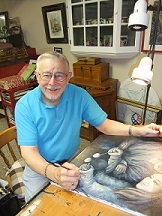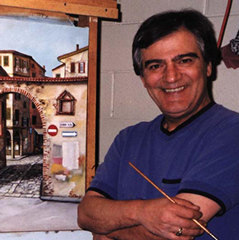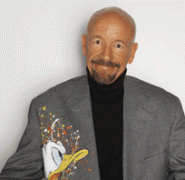San Diego native and self-proclaimed California Boy, David Willardson, enjoyed a successful career in design and illustration before teaming up with Disney. He had always loved all things Disney–from the first time he visited Disneyland as a kid in 1955, to working there as a cast member throughout high school–but he never considered a professional relationship until he received a call from Jeffrey Katzenberg (head of animation at Disney) in the 80’s. Katzenberg had seen an illustration of Goofey that Willardson had done for a national ad spot, and asked if he would be interested in creating an entirely new look for the animated movie poster campaigns that featured the reissued classics and new movies. Then for the next 17 years, Willardson was the artist of choice for those Disney campaigns.
Lurking behind his beloved Disney characters, Willardson discovered a team of animation geniuses that had left an indelible mark on American culture. He sought about learning their craft in order to figure out what made his heroes tick. “As a young kid, I studied them in minutiae,” Willardson remembers. The first poster Willardson created for Disney (and Katzenburg) was for the re-release movie poster for “Bambi.” His fully rendered images for the Disney animated movie posters are still the most widely used to date and include such well-known movie posters as: “The Little Mermaid,” “Aladdin,” “The Lion King,” “Pocahontas,” “The Hunchback of Notre Dame,” “Robin Hood,” “Beauty & The Beast” as well as Classics, such as “Snow White,” Cinderella,” “Pinocchio”, “Jungle Book” (to name a few), earning him a permanent place in animation history.
Willardson had a long run at Disney, but when computer graphics took over much of the former hand illustration work, he decided to make a change and closed his design studio in 2003 to embark on a bold new venture as a Disney fine artist. David Willardson is now the creative force of the “Pep Art Movement,” an innovative new genre where cultural icons are rendered with an unprecedented infusion of color, personality, and energy. Unlike traditional “pop art” however, the subject’s of Willardson’s “pep” imagery are not soup cans or Brillo boxes; they are classic Disney characters. “They were my childhood heroes” Willardson remembers. “I never lost that.” The images in his work express an untapped inner verve bubbling within, giving us a sacred glimpse into their technicolor souls. “And they do have souls,” Willardson says of his subjects. With joy, sadness, frustration, and exhilaration, Willardson’s characters exude personality and soul first granted them by the old masters. “They are living legends to me,” Willardson says, “just like Marilyn Monroe, Elvis and James Dean.”











